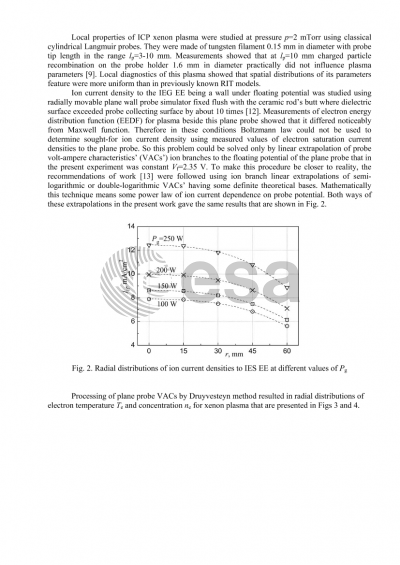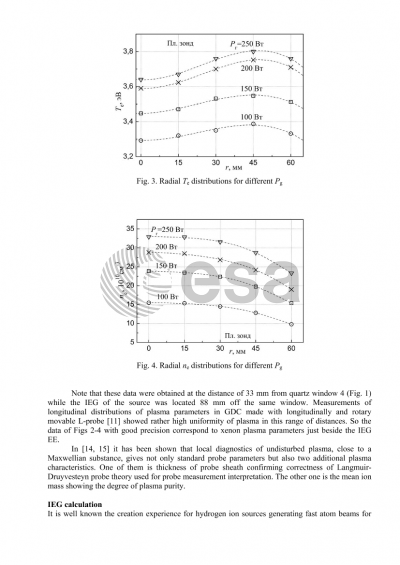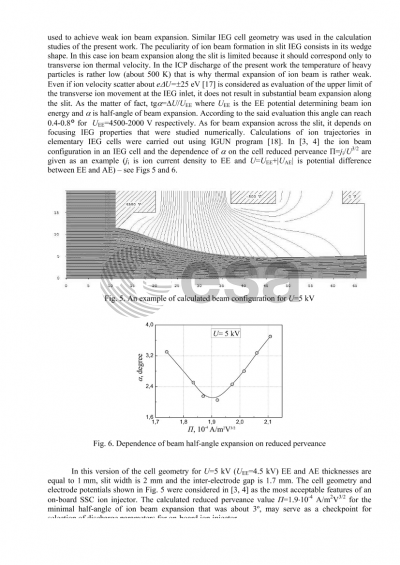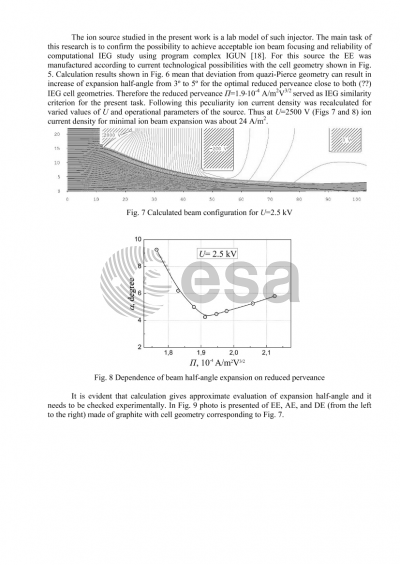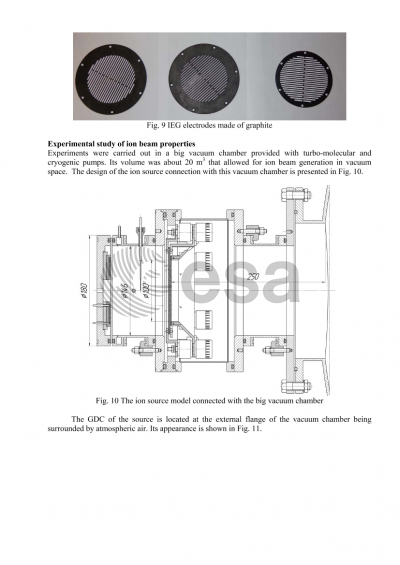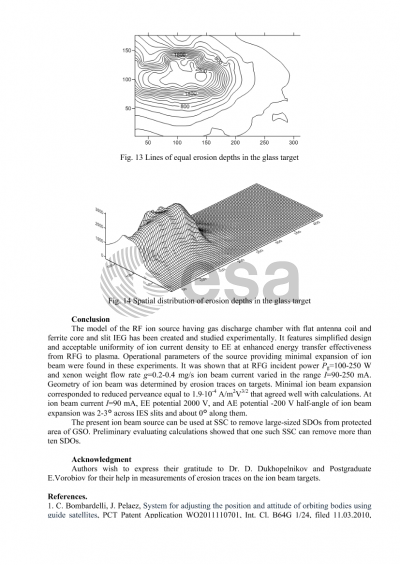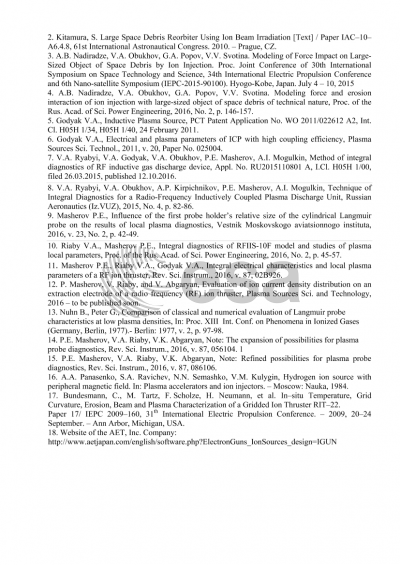Document details

Abstract
This work is related with the problem of space debris objects’ (SDO) removal from geostationary orbit region affecting them with ion beam injected from aboard a service spacecraft (SSC). The distance between SSC and SDO in the process of SDO transportation to a burial orbit can usually exceed the sizes of both objects which demands to use a wedge-shaped ion beam providing longer range than a conical ion beam. Creation of such ion beam source is an important part of the present theoretical-experimental research based on the experience of works with hydrogen ion sources for thermonuclear devices. It comprises a gas discharge chamber (GDC) with a flat antenna coil enhanced by ferrite core and an ion extraction grid (IEG) unit containing three plane graphite electrodes with slit orifices generating ion beam 100 mm in diameter. The geometry of ion accelerating cells for IEG slits had to provide minimal ion beam expansion. The corresponding calculations gave 3-4° expansion half-angles for referred perveance 1.9?10-4 A/m2V-3/2 in xenon plasma with electron concentration 2.1?1017 m-3 and electron temperature 5 eV according to plasma parameter measurements in GDC for incident RF generator’s power 100-250 W at the driving frequency 2 MHz, xenon flow rate 2-4 sccm and plasma pressure 2-4 mTorr that resulted in ion beam current 90-250 mA. Plasma parameters were measured with cylindrical Langmuir probes made of tungsten filament 0.15 mm in diameter and 3-10 mm long. They showed that radial spread of plasma parameters in the GDC in front of IEG was about ?10%. The ion beam expansion half-angles were determined by the analysis of ion erosion traces in titanium and glass targets: they turned out to be 2-3° across IEG slits and about 0° along them. Thus the possibility to obtain weakly expanding wedge-shaped ion beam necessary for the solution of the said SDO problem was showed theoretically and confirmed experimentally.
Preview


